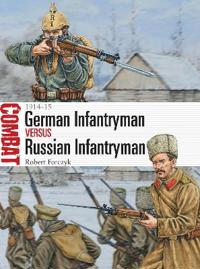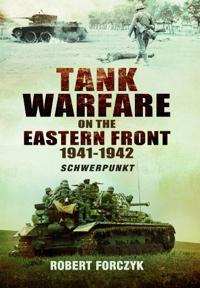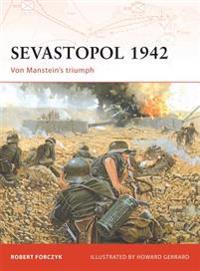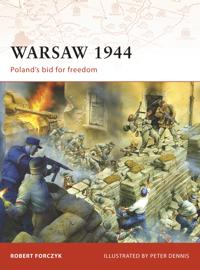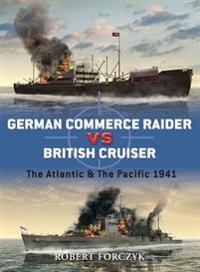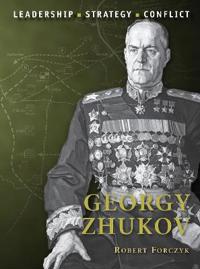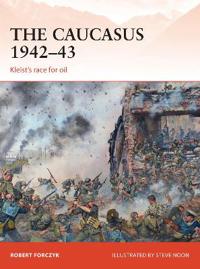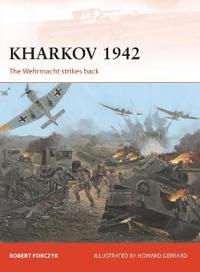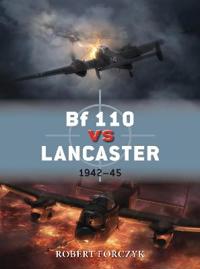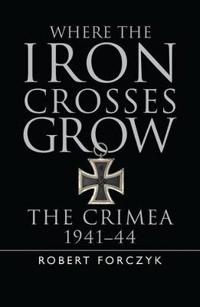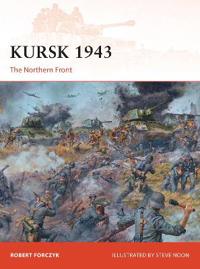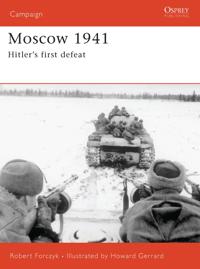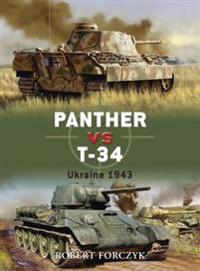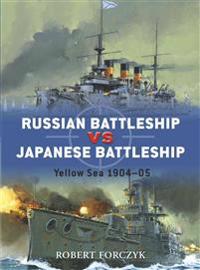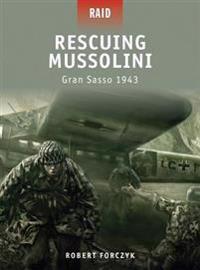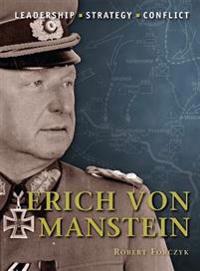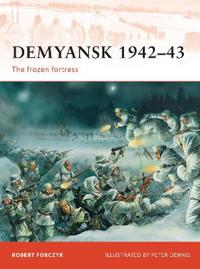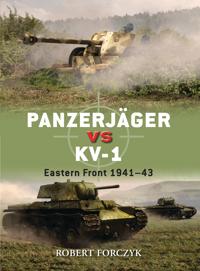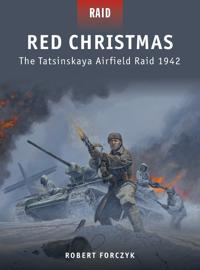German Infantryman Vs Russian Infantryman 1914-15 (Pocket)
avRobert Forczyk, Adam (ILT) Hook, Robert Forczyk
ISBN: 9781472806543 - UTGIVEN: 2015-04The Eastern Front of World War I is sometimes overshadowed by the fighting in the West. But the clashes between Imperial Germany and Tsarist Russia in East Prussia, Poland and Lithuania were every bit as gruelling for the participants as the great battles in Western Europe. In spite of the crushing [...]
Tank War on the Eastern Front: Schwerpunkt (Inbunden)
avRobert Forczyk, Robert Forczyk
ISBN: 9781781590089 - UTGIVEN: 2014-05The German panzer armies that swept into the Soviet Union in 1941 were an undefeated force that had honed their skill in combined arms warfare to a fine edge. The Germans focused their panzers and tactical air support at points on the battlefield defined as Schwerpunkt - main effort - to smash throu[...]
Sevastopol 1942 (Pocket)
avRobert Forczyk, Howard Gerrard, Robert Forczyk
ISBN: 9781846032219 - UTGIVEN: 200801In late July 1941, Hitler ordered Army Group South to seize the Crimea as part of its operations to secure the Ukraine and the Donets Basin, in order to protect the vital Romanian oil refineries at Ploesti from Soviet air attack. After weeks of heavy fighting, the Germans breached the Soviet defence[...]
Warsaw 1944 (Pocket)
avRobert Forczyk, Peter Dennis, Robert Forczyk
ISBN: 9781846033520 - UTGIVEN: 200903Defeated and occupied in 1939, Poland had suffered under the Nazi heel for nearly five years. Undaunted, however, the Poles formed an underground army, the Armia Krajowa (Home Army), and waited for a moment of German weakness. That moment seemed to have arrived in July 1944 as the Soviet armies bega[...]
German Commerce Raider vs British Cruiser (Pocket)
avRobert Forczyk, Ian Palmer, Robert Forczyk
ISBN: 9781846039188 - UTGIVEN: 201006During World War II, the Kriegsmarine armed a number of merchant vessels with concealed guns and torpedo tubes for surprise attacks against Allied shipping. To counter this deadly threat, the Royal Navy employed cruisers and their intelligence-gathering apparatus to find and destroy the disguised Ge[...]
Georgy Zhukov (Pocket)
avRobert Forczyk, Adam Hook, Robert Forczyk
ISBN: 9781849085564 - UTGIVEN: 201203Zhukov was the dominant figure in the Red Army during World War II even though his actual job title varied from day to day. Serving as a senior General Staff representative from the Stavka, Zhukov moved from one critical sector to the next, serving as advisor, coordinator and de facto front commande[...]
The Caucasus 1942-43 (Häftad)
avRobert Forczyk
ISBN: 9781472805836 - UTGIVEN: 2015-05Much has been written of the titanic clashes between the Wehrmacht and the Red Army at Stalingrad, but this volume tells the other, equally important half of the story of Fall Blau (Case Blue). Learning from their experiences during the sweeping advances of Operation Barbarossa a year before, Wehrma[...]
Kharkov, 1942 (Häftad)
avRobert Forczyk
ISBN: 9781780961576 - UTGIVEN: 201304After failing to finish off the German Army in the 1941/42 Winter Counter offensive Stalin directed the Red Army to conduct a powerful blow in one sector of the Eastern Front in order to disrupt German plans. The sector chosen was Kharkov. Under Marshal Semyon Timoshenko, the Stavka's remaining rese[...]
Bf 110 Vs Lancaster (Häftad)
avRobert Forczyk
ISBN: 9781780963167 - UTGIVEN: 201306The RAF introduced the Avro Lancaster in 1942 and used it to spearhead this aerial offensive. In response, the Luftwaffe created an elite nightfighter force based primarily upon the Bf 110. The Luftwaffe was quick to equip it with airborne radar that allowed it to intercept and destroy Lancasters ov[...]
Where the Iron Crosses Grow (Inbunden)
avRobert Forczyk
ISBN: 9781782006251 - UTGIVEN: 2014-09The Crimea has been the scene of conflict throughout its history. First occupied by the Russians in the 18th century it was the scene of the Crimean War, and was drawn into the Russian Civil War, as well as World War II. Today it remains a much disputed region with the Crimea at the center of ongoin[...]
Kursk 1943 (Pocket)
avRobert Forczyk
ISBN: 9781782008194 - UTGIVEN: 2014-09In the summer of 1943, recoiling from defeat at Stalingrad, Hitler conducted a limited objective offensive to eliminate the Soviet Kursk salient. Operating a classic pincer attack of the kind that succeeded during the 1942 Kharkov campaign he hoped that the resulting heavy losses inflicted on the Re[...]
Moscow 1941 (Häftad)
avRobert Forczyk
ISBN: 9781846030178 - UTGIVEN: 200604In late September 1941, the war in the east was approaching a climax. Since the beginning of the German invasion on 22 June 1941, Soviet forces had suffered the staggering loss of over 2 million troops. After inflicting a horrendous defeat on the Soviet armies at Kiev in early September, Hitler now [...]
Panther Vs T-34 (Pocket)
avRobert Forczyk
ISBN: 9781846031496 - UTGIVEN: 200710This book describes the design and development of these two deadly opponents, the Panther and the T-34, analysing their strengths and weaknesses and assessing their tactics, weaponry and training. Moreover it gives an insight into the lives of the tank crews themselves who were caught up in the larg[...]
Russian Battleship Vs Japanese Battleship (Häftad)
avRobert Forczyk
ISBN: 9781846033308 - UTGIVEN: 200902The first major clash between a European and Asian state in the modern era signalled the beginning of Japan's rise as a major power on the world stage. Watched by the rest of the world's superpowers, this incredibly violent war was disastrous for the Russians who, despite their superior numbers, wer[...]
Leningrad 1941-44 (Häftad)
avRobert Forczyk
ISBN: 9781846034411 - UTGIVEN: 2009-09Hitler's protracted siege of Leningrad resulted in one of the most brutal campaigns on the Eastern Front during World War II. The German Army Group North was able to isolate the city and its garrison for a period of 900 days, during which an estimated 1.5 million Soviets died from combat, disease an[...]
Rescuing Mussolini (Pocket)
avRobert Forczyk
ISBN: 9781846034626 - UTGIVEN: 201004The successful rescue of imprisoned Italian dictator Benito Mussolini from atop the Gran Sasso plateau was one of the most dramatic special forces operations in military history. Arrested by his own officers in July 1943, Mussolini had been whisked away to an isolated and heavily guarded mountaintop[...]
Erich Von Manstein (Pocket)
avRobert Forczyk
ISBN: 9781846034657 - UTGIVEN: 201005Erich von Manstein was one of the most successful German commanders of World War II. His military mind proved outstanding in many a conflict but perhaps his greatest triumph was his ingenious operational plan that led to the rapid defeat of France in May 1940. Manstein also showed great skill under [...]
Demyansk, 1942-43 (Häftad)
avRobert Forczyk
ISBN: 9781849085526 - UTGIVEN: 201206The fighting around the town of Demyansk was one of the longest encirclement battles on the Eastern Front during World War II, stretching from February 1942 to February 1943. Originally, the German 16. Armee occupied Demyansk in the autumn of 1941 because it was key terrain that would be used as a s[...]
Panzerjager Vs KV-1 (Pocket)
avRobert Forczyk
ISBN: 9781849085786 - UTGIVEN: 201210The German Army developed the 37-mm Pak 36 in 1936 to provide the primary weapon for its panzerjagers, who were responsible for anti-tank defense in infantry divisions. Realizing that the new Wehrmacht offensive doctrines intended to fully exploit the shock effect, firepower and mobility of armor, t[...]
Red Christmas (Pocket)
avRobert Forczyk
ISBN: 9781849085861 - UTGIVEN: 201204By December 1942, the Soviets had surrounded the German 6th Army in Stalingrad, cutting off all lines of supply except through the air. Seeking to sever this last German lifeline, Soviet Command decided to launch a raid with the entire 24th Tank Corps to seize the airfield at Tatsinskaya, the primar[...]
Erich von Manstein i strid - andra världskriget (Inbunden)
avRobert Forczyk
ISBN: 9789187999024 - UTGIVEN: 2015-10-15Walter Model i strid - andra världskriget (Inbunden)
avRobert Forczyk
ISBN: 9789187999086 - UTGIVEN: 2016-04-15

